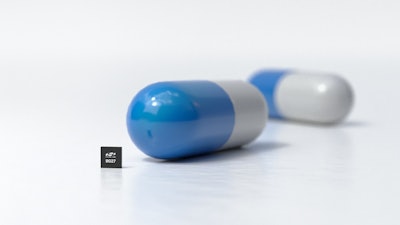
Silicon Labs today announced two new integrated circuit families designed for the smallest form factor IoT devices: the xG27 family of Bluetooth systems on chips (SoCs) and the BB50 microcontroller unit (MCU).
Designed for the smallest IoT devices, the xG27 and BB50 families range in size from 2 mm-squared, about the width of a #2 pencil lead, to 5 mm-squared, less than the width of a standard #2 pencil. These offer IoT device designers energy efficiency, high performance, trusted security, and in the case of the xG27 family, wireless connectivity. This makes the xG27 SoC family and BB50 MCU ideal for tiny, battery-optimized devices like connected medical devices, wearables, asset monitoring tags, smart sensors, simple consumer electronics like toothbrushes and toys, and more.
"Silicon Labs is the pure-play IoT leader, and our breadth, depth, and focus enable us to support the broadest range of wireless connectivity protocols of any semiconductor company," said Silicon Labs CEO Matt Johnson. "The xG27 SoCs and BB50 MCUs are helping developers build exciting new devices while also simplifying their development processes, all while maintaining the low-power and small form-factor requirements for extremely small devices."
The new xG27 family of SoCs comprises the BG27, for Bluetooth connectivity, and the MG27, supporting Zigbee and other proprietary protocols. Built around the ARM Cortex M33 processor, the BG27 and MG27 share several common features designed to make them the ideal SoC for small form-factor devices, including:
- Wafer-level Chip Scale Packaging as small as 2.3 mm x 2.6 mm, ideal for compact and unobtrusive devices like medical patches, continuous glucose monitors, wearable electrocardiograms, and asset tags in various settings like retail and agriculture.
- Integrated DCDC Boost that can allow the devices to operate on batteries as low as 0.8 V, thereby reducing their devices' size, form factor, and cost.
- Integrated Coulomb Counter that enables battery level monitoring to avoid battery depletion during the use of applications, improving user experience and product safety.
- Advanced security with Silicon Labs Secure Vault with Virtual Security Engine (VSE) for secure boot and debug hardened against glitch attacks, tamper protection, and additional features designed to protect the device and its users' data from local and remote cyber threats.
- Shelf Mode that reduces energy use to less than 20 nano amperes so that devices can be transported and stocked on shelves while maintaining nearly full battery life for the end-user.
Lura Health, a medical device manufacturer and participant in the Alpha program for BG27, has already selected the new SoC to form the basis of its new in-development smart wearable. But unlike some of the most common wearables on the wrist or other external skin, the new Lura Health monitor goes in a person's mouth. Specifically, the device is so small that it is glued to a tooth. With the device, dentists and other clinicians can collect important data from saliva, which is used to test for over 1,000 health conditions.
"The BG27 is amazing because it's small enough that we can develop an IoT sensor smaller than a tooth, the power consumption is low enough to remove battery life as a product constraint, it has enough memory to store a sophisticated firmware application, it allows us to perform the data analysis required to gain insightful information from what we are monitoring, and it has all the peripherals we need to interface with our sensors," said Noah Hill, co-Founder and CTO of Lura Health. "We spent hundreds of hours searching for a microcontroller that meets our needs, and the BG27 is the only solution that checks every box."






















